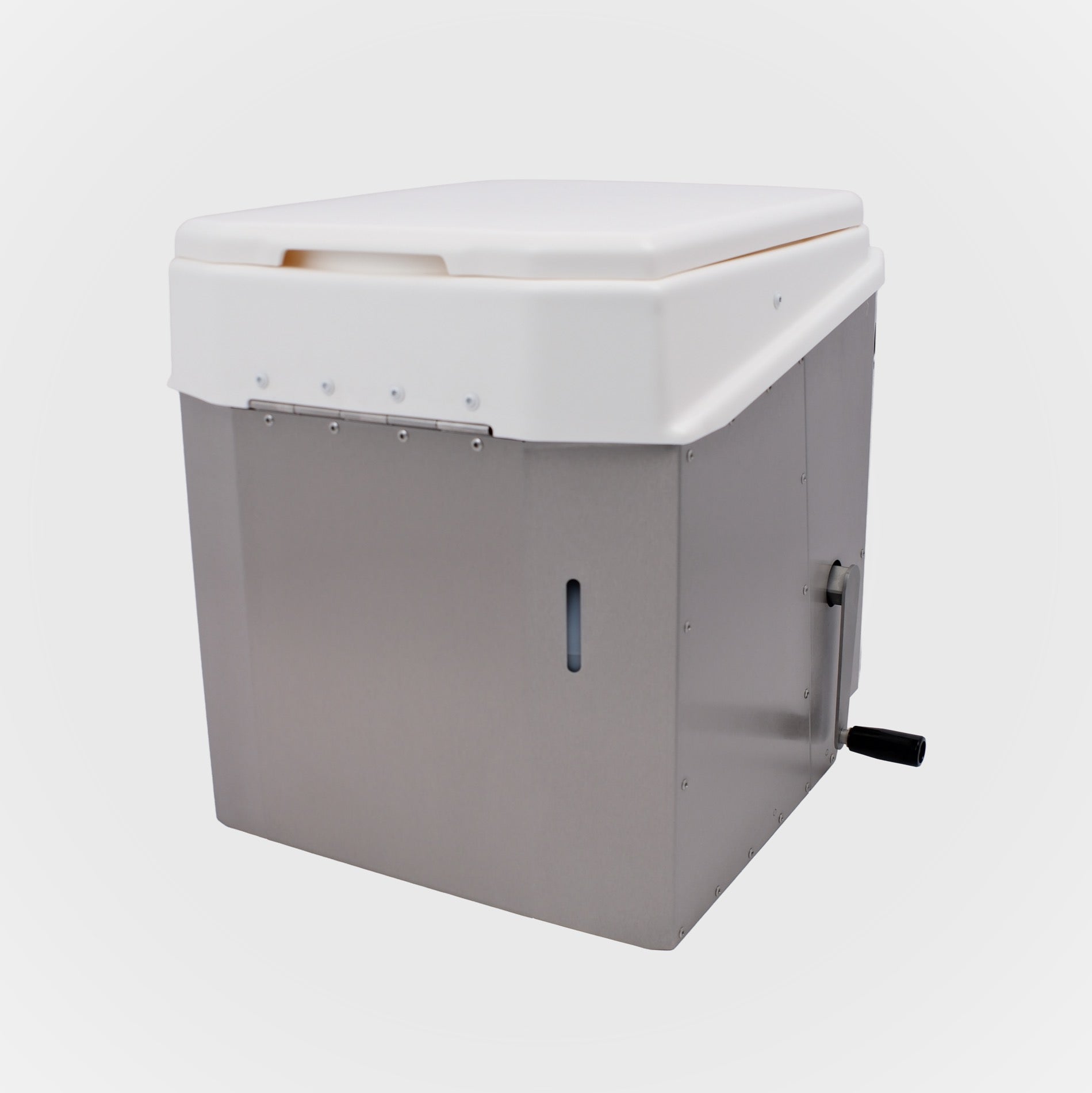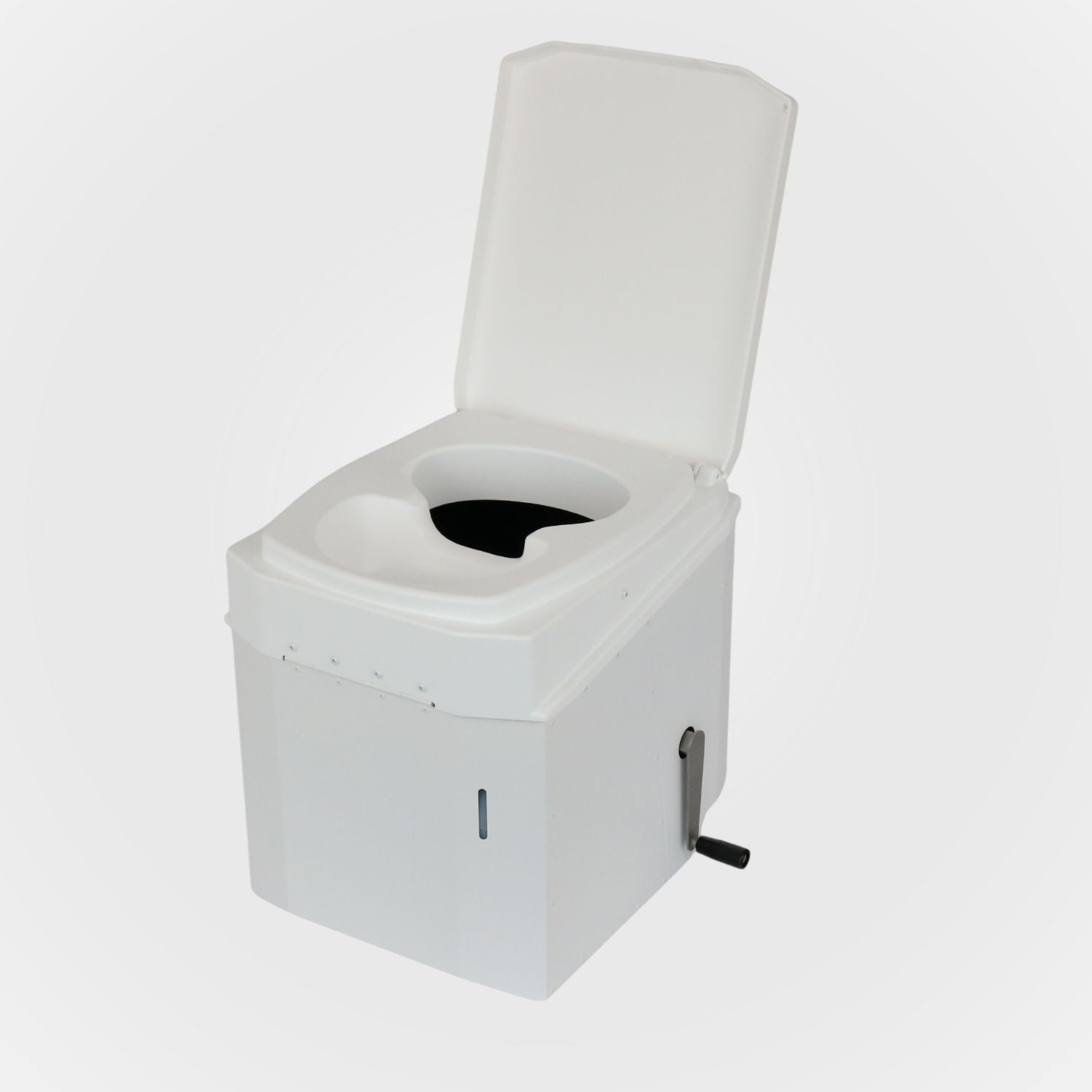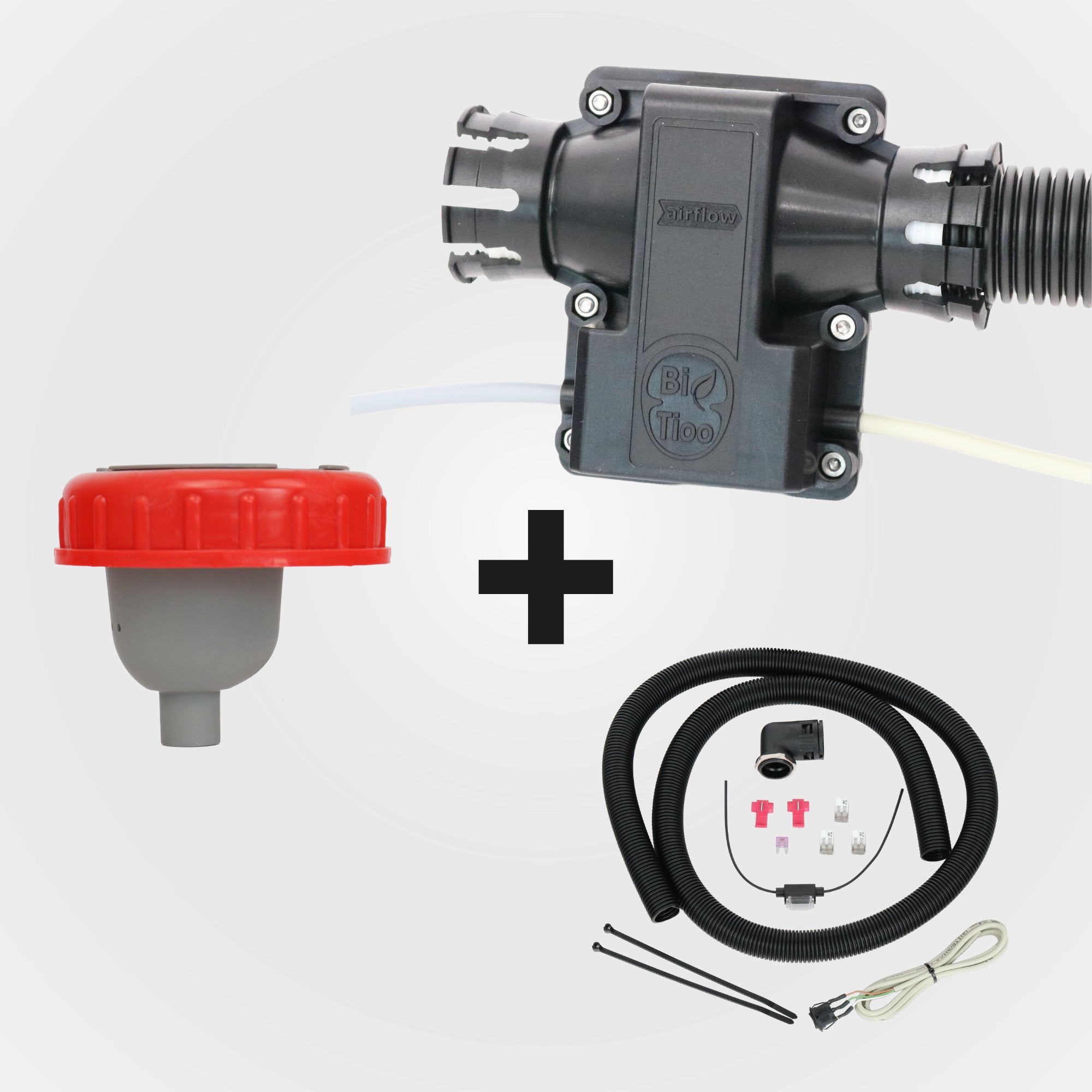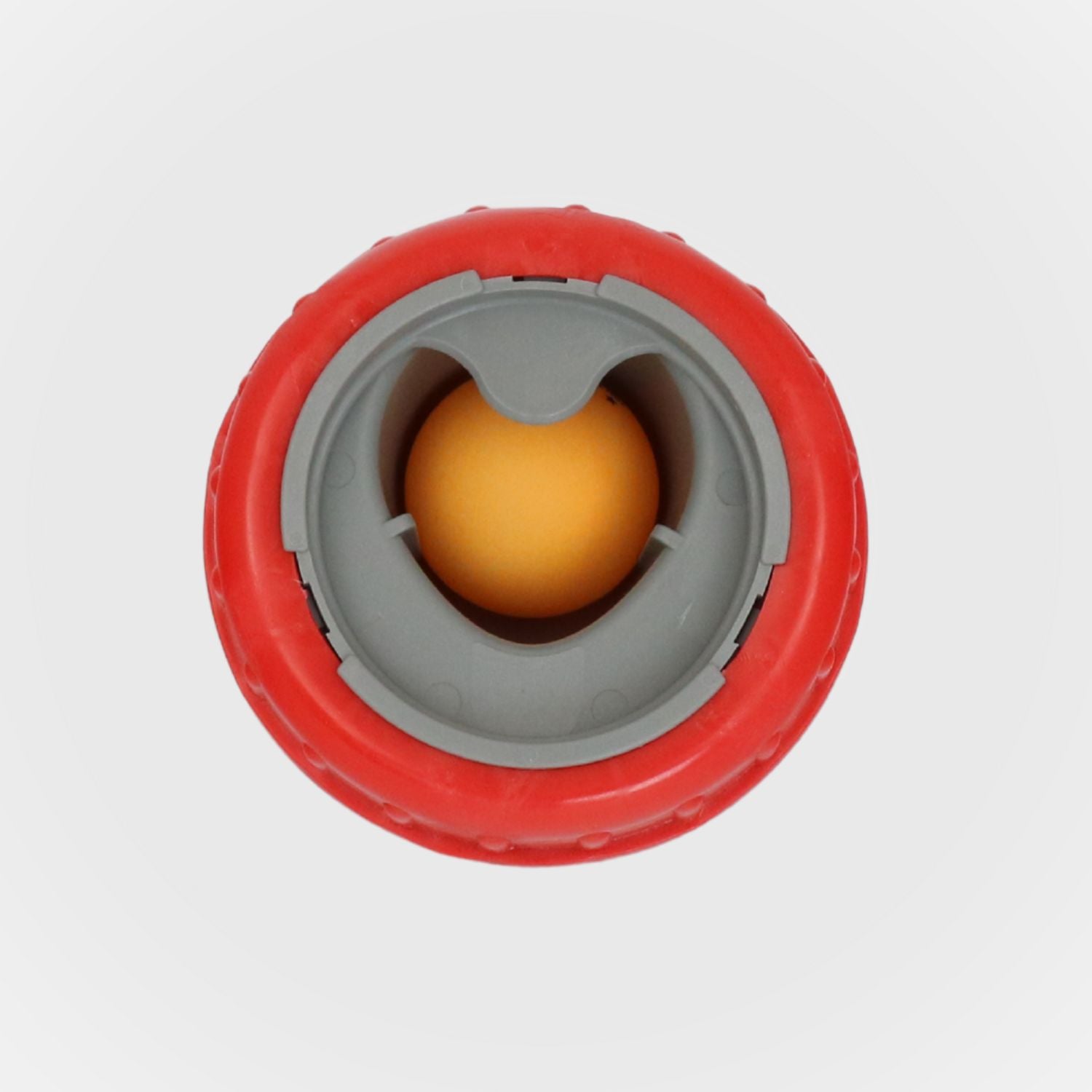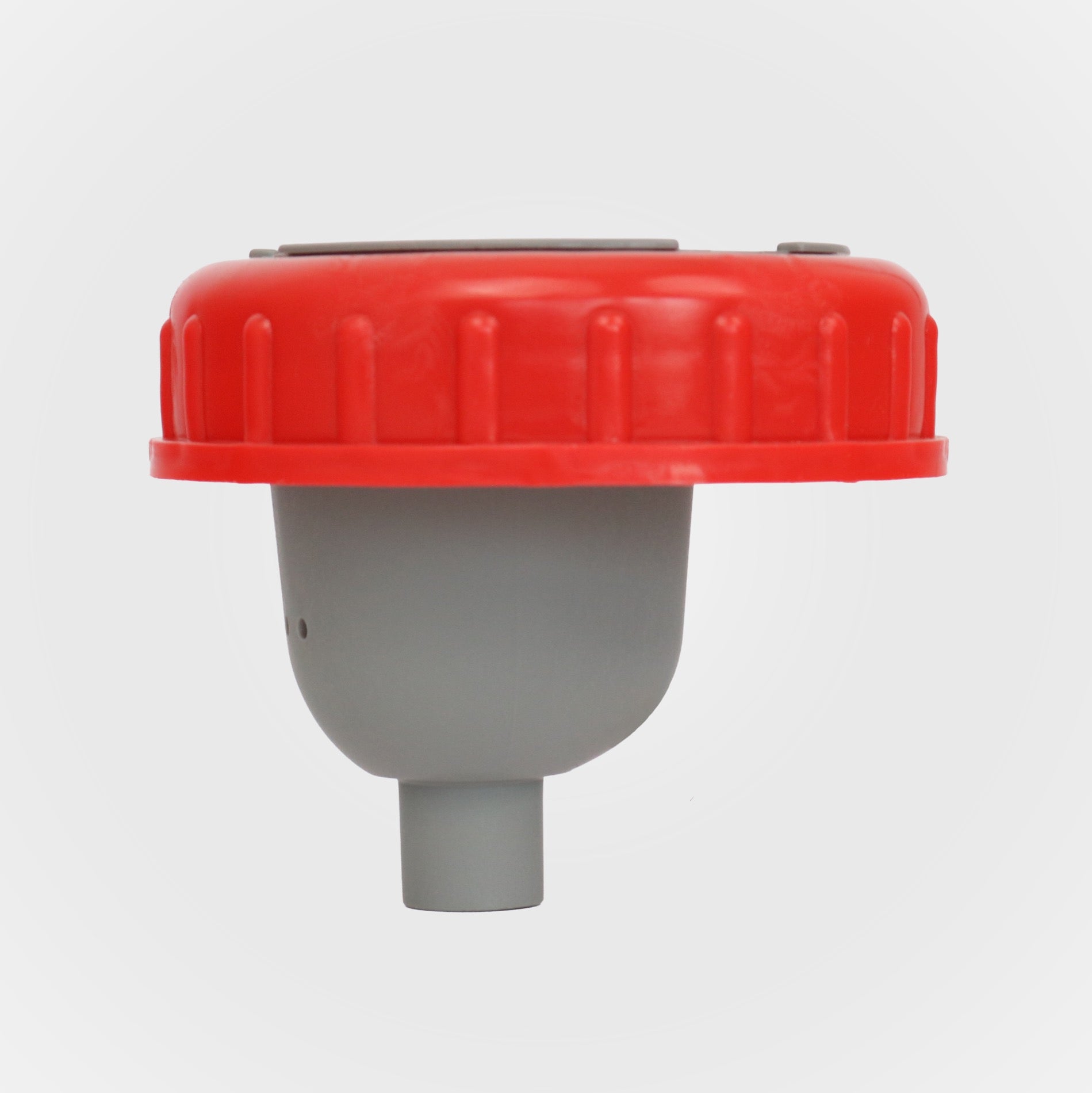A garden toilet is the perfect toilet for anyone who wants to be independent in their garden, allotment, or garden shed. Modern toilet systems work without water, produce minimal odor, and can be integrated as a compact toilet in a toilet shed or directly into the house.
Whether you're looking for a dry toilet, a composting toilet, or a separating toilet with urine separation: BioTioo offers a sustainable solution that's quick to install, looks great, and works reliably without a sewer system. For a relaxing experience in your own garden.
What types of garden toilets are available?
There are three common garden toilet models that are perfect for use in the garden:
- dry composting toilet
- Composting toilet
- chemical toilet
They all differ in their functionality, handling and environmental friendliness, and all belong to the category of dry toilets.
The term "dry toilet" is a general term for all waterless toilet systems. It ranges from simple box toilets to compact kit solutions and permanently installed toilet cubicles.
Dry toilets are flexible, inexpensive and can be adapted as desired – depending on dimensions, desired seat height or installation location in the garden shed.
dry composting toilet
The composting toilet is one of the most popular types because it operates with very little odor thanks to the urine separation.
A separator insert ensures that liquid waste is collected separately in a canister, while solid waste ends up in a separate collection container. This separation prevents the production of ammonia and consequently reduces odor.
A particular advantage: Optional accessories such as litter, filters, or fans make the garden toilet even more hygienic and odor-free. Operation remains simple, and disposal is straightforward and compliant with regulations. The result: no water, no sewage system, easy disposal, and a toilet that works conveniently in your own garden at any time.
Composting toilet
In a composting toilet, bedding material such as coconut shavings is mixed with the excrement after each use. This material absorbs the liquid, thereby binding the odors and simultaneously initiating the natural composting process.
Over time, valuable compost is produced, which – depending on local regulations – can be used in the garden. The composting toilet operates entirely without a water connection or chemicals, making it a perfect fit for ecological concepts.
chemical toilet
The chemical toilet is a mobile alternative familiar from the camping sector. As the name suggests, chemicals are used to mask odors and decompose waste in a tank.
However, this also means that disposal is only permitted at special disposal stations and that the toilet is less environmentally friendly. Another drawback: In many allotment garden associations, chemical toilets are only permitted to a limited extent or not at all.
Materials and designs: Between wood, plastic and stainless steel
For the housing of the garden toilet, you have the choice between wood, plastic, and stainless steel. These materials impress with their own advantageous properties:
- Wood: Natural and visually warm, it seems like a perfect fit for gardens and outhouses with a suitable roof covering. However, wood absorbs moisture quickly outdoors, which can make the floor or the entire structure unstable in the long run.
- Plastic: Lightweight, easy to clean, and initially weather-resistant. Plastic is often offered as a compact product with smooth inner surfaces. However, it can become brittle and crack in cold temperatures – especially in high-traffic areas like the floor of a toilet cubicle.
- Stainless steel: Extremely robust, durable, and hygienic – ideal for products intended for many years of use. Stainless steel resists moisture, temperature fluctuations, and mechanical stress better than wood or plastic. For a toilet cubicle or flooring, this means: no deformation, no swelling, no brittleness – a premium material that makes all the difference.
BioTioo dry composting toilets are made of robust stainless steel with a cold-impact resistant plastic bowl, making them both exceptionally hygienic and easy to clean. For a clean toilet – even in the garden.
Ergonomics in the garden with the right dimensions
Are you still unsure which toilet is best suited to your garden? Here are a few tips:
When choosing a toilet, pay attention to the correct dimensions. On the one hand, the toilet should have enough space in the garden shed or outhouse, and on the other hand, the seat height must be correct.
An ergonomic toilet seat further increases comfort. Families with children also particularly benefit from a stable toilet with a non-slip base and an easily accessible litter tray.
For small plots, narrow housings with a sufficiently large solids tank are a good idea. Also, plan for some ventilation to ensure odors are completely eliminated.
Here's what you should pay attention to when buying a garden toilet:
- Quality and material of the housing: Does it fit in the garden and is it durable?
- The correct dimensions, weight, and volume of the collection containers.
- Seat height and toilet seat; for greater comfort
- Assembly effort: Does it come as a kit with instructions?
- Price and shipping: What is included in the delivery?
- Service: Are spare parts and additional accessories available?

Disposal and hygiene – how to do it right
Disposing of waste and maintaining the hygiene of a garden toilet is straightforward, provided you follow a few simple rules.
For example, urine is collected in a separate canister and should be emptied regularly – either in the toilet in the house or via official collection points.
Important: Never pour undiluted manure into the garden bed, as this can contaminate the groundwater. Solid manure, on the other hand, goes into the collection container, is covered with some bedding material, and can then be composted or disposed of with regular household waste.
For cleaning, a combination of lukewarm water and mild detergents is usually perfectly sufficient. Harsh chemicals are neither necessary nor desirable. To ensure your garden toilet remains odor-free in the long term, make sure the air circulates well and install additional filters if needed. This will keep your garden toilet clean and hygienic for years to come, allowing it to be used by your friends and fellow gardeners.
Is this legal? What is and isn't allowed in an allotment garden?
Not all gardens are the same – and the rules for allotment gardens are completely different from those for the garden in front of your own house.
A flush toilet is only permitted in an allotment garden if there is a connection to the public sewer system. Since this is not possible in most allotments, flush toilets are generally prohibited.
The reason: The wastewater seeps into the ground and can therefore contaminate the groundwater. Furthermore, there are local club regulations that outline obligations regarding distances between the toilet and neighboring gardens, privacy screens, and any necessary building permits for toilet facilities.
For those who find this too complicated, there's good news: dry toilets and composting toilets are permitted in most cases and can therefore be used without any problems.
Here's how to install your garden toilet in 5 steps.
- Choose a location: Use a dry space in the garden shed or toilet block with short distances, some light and, if necessary, good ventilation.
- Setting up the toilet/cabin/floor: Place the toilet on a stable floor and ensure that the roof of the toilet cabin is watertight.
- Insert the separator: Align the urine separator correctly, insert the collection container and canister. Finally, check that the lid is properly closed to prevent odors from escaping.
- Connect accessories: If you have additional fans, install them and also prepare the bedding. Paper holders and hooks for the bags are useful additions to the equipment.
- Operation and maintenance: Control odors by covering waste and thoroughly cleaning the entire toilet at least once a week. Important for disposal: Follow local regulations; you can hardly go wrong with official collection points.
Relax carefree in the garden – with a dry composting toilet from BioTioo
BioTioo has stood for well-designed composting toilet systems for years. Reliable, hygienic, low-odor, and perfect for the garden.
All our toilets can be used completely without a water connection and collect urine and solids separately. Best of all: they are ready for use in just a few simple steps.
Thanks to their sturdy housings, comfortable seats, generously sized collection containers, and easy-to-understand instructions, getting started with portable toilets is particularly easy. Matching accessories such as additional canisters, bags, litter trays, or a fan further enhance comfort.
BioTioo offers the following models:
- BioTioo 1.0: The robust classic – durable, easy to clean and ideal for permanent installation or stationary use in toilet cubicles.
- BioTioo 2.0: The comfortable successor with improved seat and modern hinge – ideal if you value comfort and everyday usability.
- BioTioo 2.0 RL-M: The premium version with an electric motor for even more comfort.
As you can see, with BioTioo you'll find the garden toilet you're looking for. Start planning now with BioTioo and make your garden toilet sustainably safe. For more comfort, less effort, and a good feeling every time you use the toilet.


